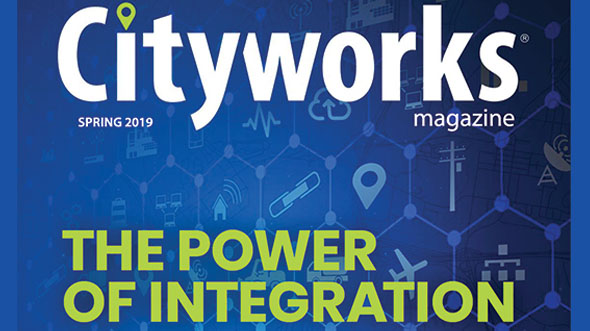
BLOG
—
Make Your Systems Communicate with Automated Integrations
Everyone with more than one enterprise software system with data in common should be thinking about how to make them talk to one another. For this, an automated integration is an effective solution—it can reduce duplicate entry, improve data integrity and make data available to more people, more quickly. Fortunately, more and more software packages are revealing application programming interfaces (APIs), web services and other options to make this communication easier. But despite this, it can still be overwhelming to evaluate the many possibilities of how to build integrations.
Guidance: Integration Initiation to Implementation
So, what is a good starting point? First, look for and identify data that is stored in or could be used by more than one system. Asset maintenance and management systems like Cityworks will likely have a lot of overlap with other enterprise software programs, including accounting, purchasing, fleet management, utility billing, pavement management and more.
Once a potential integration is identified, consider its complexity as well as its tolerance for errors or delays. Are there only two systems involved? Are there more? Does information need to flow in one direction, or will users in multiple systems be sharing updates back and forth? If there is a delay in data getting from one system to the other, will this cause minor or major disruptions?
Next, evaluate the tools and options available for the integration. If a commercial off-the-shelf integration already exists from one of the software vendors, it may provide significant advantages in terms of maintainability. If not, consider custom software development. System integration tools and platforms vary widely in capability, cost, extensibility and maintainability. The following describes a few options:
Extract-transform-load (ETL) frameworks:
These can be used to move data appropriately from one system to another. These are well-suited for simple, one-way batch integrations. Traditionally they are used to talk directly to a database rather than through an API, although many can be adapted to do so.
Enterprise service bus (ESB) platforms coupled with messaging:
These can be well-suited for complex, real-time bidirectional workflows. Different vendors offer solutions with a number of tradeoffs in terms of usability versus annual costs. Several options allow the creation of simple integrations through a drag-and-drop interface, so you don’t need full-fledged software developers to create the integrations. But these lack more robust elements like messaging or version control.
Woolpert’s integration team can help organizations review these steps and options to find the solution best suited to meet their goals and needs. My colleague James Lloyd and I will discuss this topic in depth during our “Navigating Integrations and Asset Management” webinar at 2 p.m. ET Tuesday, Dec. 15. For more information and to register for this webinar, visit https://info.woolpert.com/en/12-15-integrations-webinar

Miles Kelly
Miles Kelly is a project manager and software engineer in Woolpert’s technology services market. She has experience building system integrations to help clients fully leverage the power of their software investments. Kelly determines client needs, develops GIS-centric software solutions and creates automated processes to integrate data.


